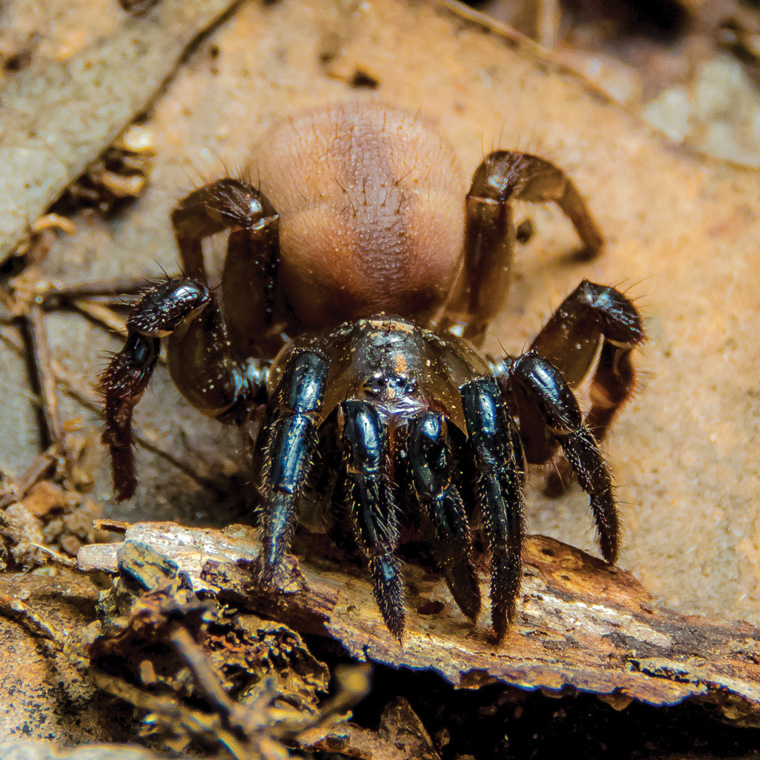Conothele, the only Australian genus in this family, was recently in Ctenizidae, which now is not present in Australia. Conothele has a saddle-shaped dent in the middle of its third leg, used to lock itself firmly against the walls of its burrow. It is found in warmer parts, from coastal rainforests to central Australia as long as some moisture is present. They tend to build strong, cork-like doors to seal their long burrows, hence the common name, Cork-lid Trapdoor Spiders. During the day they hold the lid shut. The burrow when in the ground is a simple, vertical, silk-lined tube. Conothele arboricola lives in trees, making a cigar-shaped burrow in soft or decaying bark. Undescribed Conothele have been widely reported by arachnologists, especially from the arid inland. They have eight eyes in a small rectangular eye region. The carapace is roundish and domed. Males can be strikingly coloured with a black carapace contrasting with an orange abdomen and orange leg segments. They have stout, curved, thorn-like spines on the female's front legs. These may help with digging and prey capture. They are neither common nor aggressive and no known medical complications have occurred as a result of their bites. Body length ranges from 15 to 35 mm. It is likely there may be more than 30 Australian Conothele species but so far only three have been described.
Conothele
Two specimens, one of the spider from Cape York, with below, a dug out burrow from Kimberley WA. ♀ 16 mm ♂ unknown 


